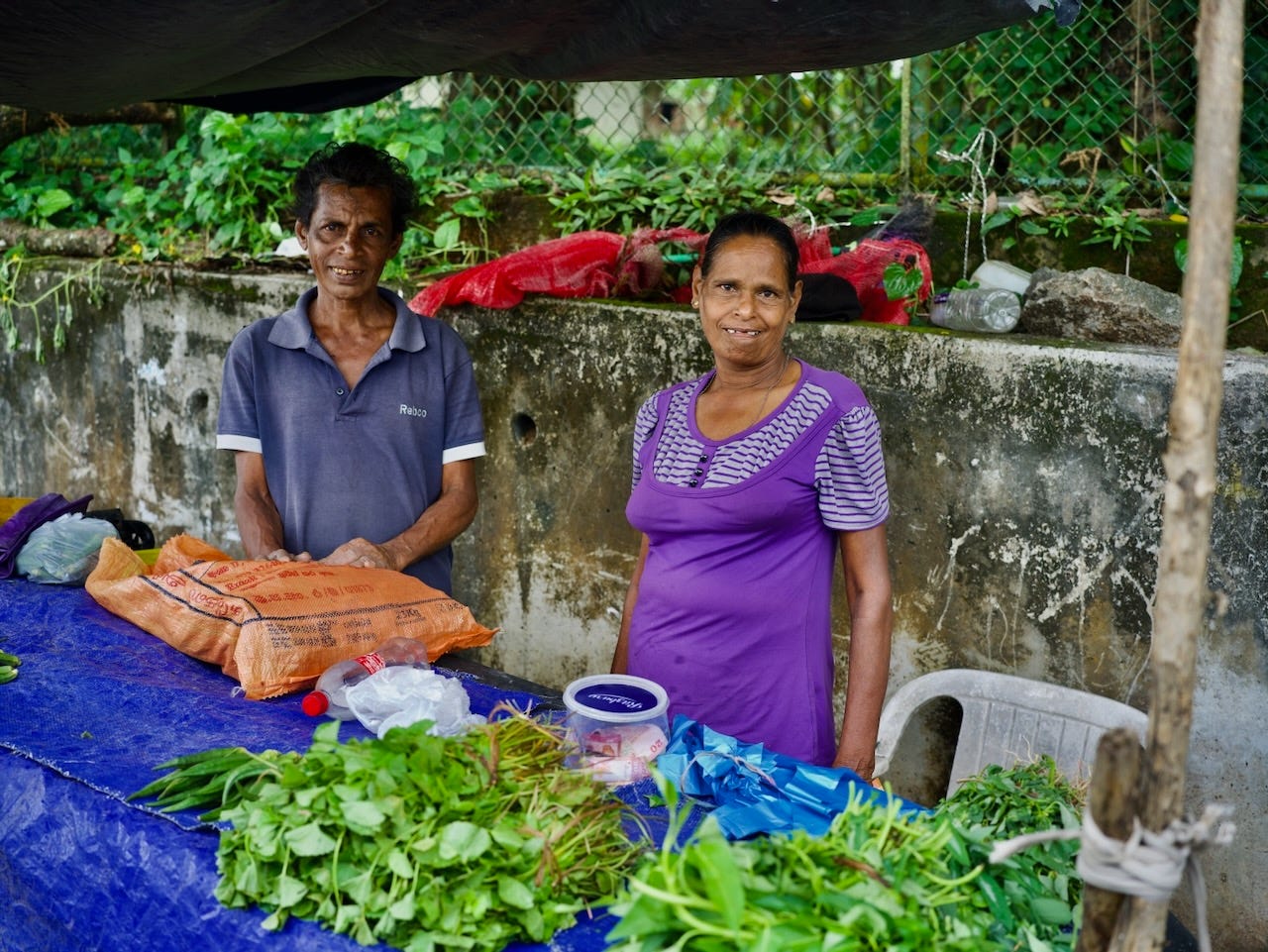Why Illegal Moneylenders Persist
When I started Gojo a decade ago, I saw illegal moneylenders as purely evil. No surprise there—their annualized interest rates often exceed 200%.
Yet, these lenders persist worldwide, in both rich and poor countries. Why?
During my recent visit to Sri Lanka, I met a couple who run a small vegetable stand from a hut on a main road, selling vegetables they grow n their garden. They subsist on little income, LKR 500 ($1.50) a day.
When urgent cash needs arise, they turn to a daily collection moneylender. Recently, they borrowed LKR 5,000 from him. Each day, the lender arrives like any other customer at their shop. When he comes, the couple retrieves LKR 100 from a plastic jar (see the one in front of the woman) and hands it to him, much like an old-fashioned newspaper subscription fee collector.
In total, they repay LKR 9,000 over three months for the LKR 5,000 loan—a staggering annual interest rate of over 300%. Shylock interest rate.
I asked why they don’t borrow from microfinance institutions (MFIs), whose interest rates are much lower—around 40% (it is still high by many countries’ standards, but it is the market rate in the country with high inflation and cost of capital). Their response was enlightening:
We don’t need a large amount. We need the exact amount, which MFIs don’t give us. We also don’t want long-tenor loans because we’re confident we can repay earlier. The lender comes to us every day and takes LKR 100 from our income, and it’s convenient. We’re sure we can earn at least LKR 100 daily, and even if someday doesn’t work out, he can wait until the next day.
This highlights a critical gap in formal financial services. Moneylenders exist because they fill a need that most formal financial institutions, including MFIs, cannot: short-term, flexible, and small-ticket loans.
Why Can’t Formal Financial Institutions Provide Such Services?
Let’s do some math. In typical microfinance operations, the cost structure often looks like this:
- 50% of interest revenue goes to debt funding costs
(financial institutions borrow money from depositors and lenders, too)
- 20% represents capital costs
- 20% covers head office and other operational costs
- 10% is for field staff
Field staff earning $10 per day must generate $100 in daily interest revenue. Assuming a daily interest rate of 0.1% (36.5% annually, simple interest), a field officer needs to oversee $100,000 in loan outstanding to break even.
If loans average $100 per customer, each field officer must manage 1,000 customers. Door-to-door service for 1,000 people in a single day is impossible.
Now consider daily collectors. With a daily interest rate of 1%, they only need $10,000 in loan outstanding to break even. Managing 100 customers daily is feasible if they operate efficiently, for example, walk through a concentrated market area to meet customers).
This explains why daily collectors charge such high interest rates: their cost per loan is far higher due to the manual, high-touch nature of the process. They were not Shylock.
So how can we overcome this.
The only way to offer loans at 0.1% daily interest is through automated repayment systems. This requires distributing mobile wallets or bank accounts. However, this approach presents a challenge: repayment incentives often rely on face-to-face interactions.
To address this, field officers must visit customers at least once a month to build rapport. This hybrid approach—combining digital payments with periodic physical interactions—is often referred to as the “phygital model.”
Many of Gojo’s group companies are implementing this model to improve their services. However, the challenge of offering short-term, daily loans remains unsolved. I hope someday we can.





